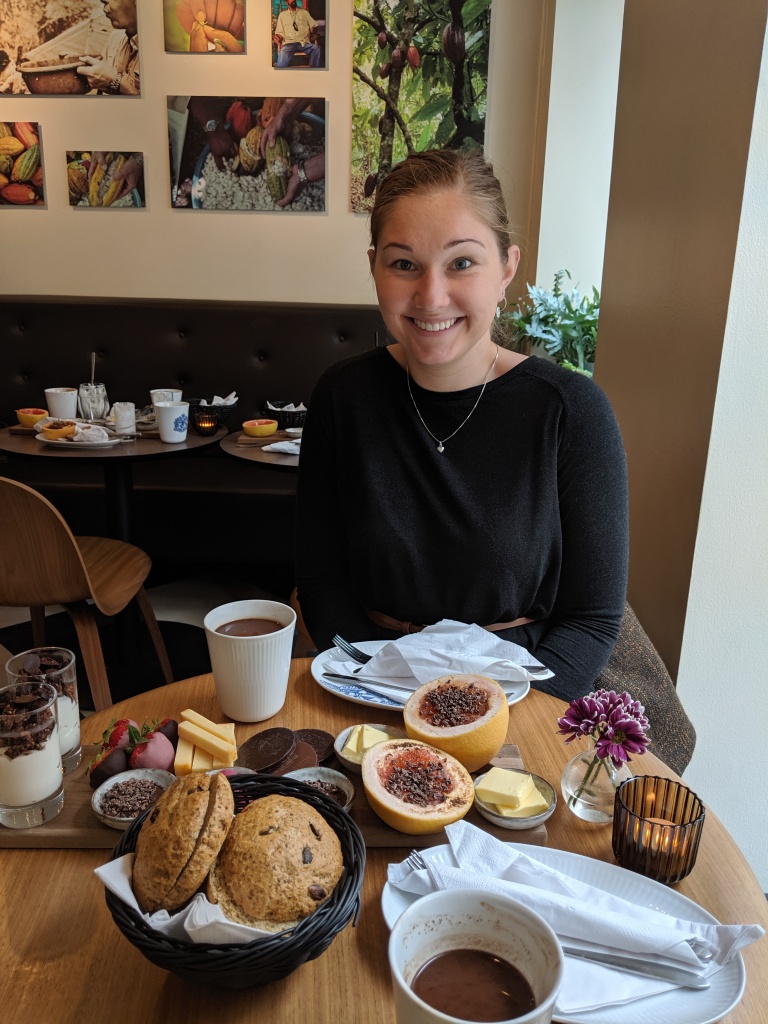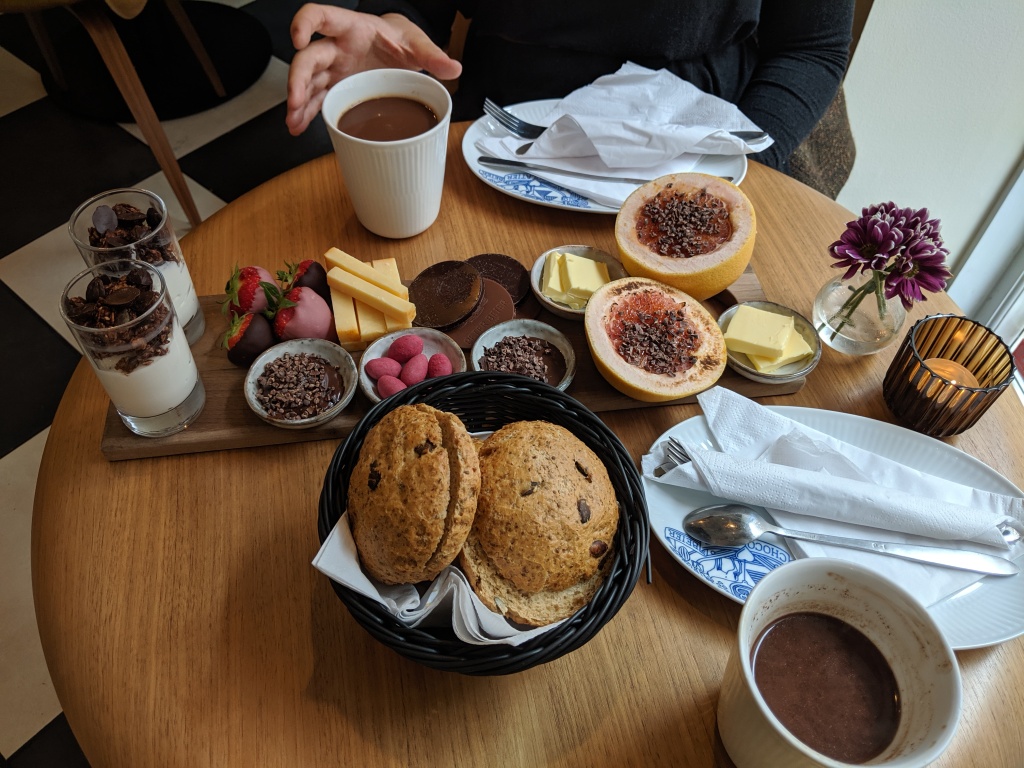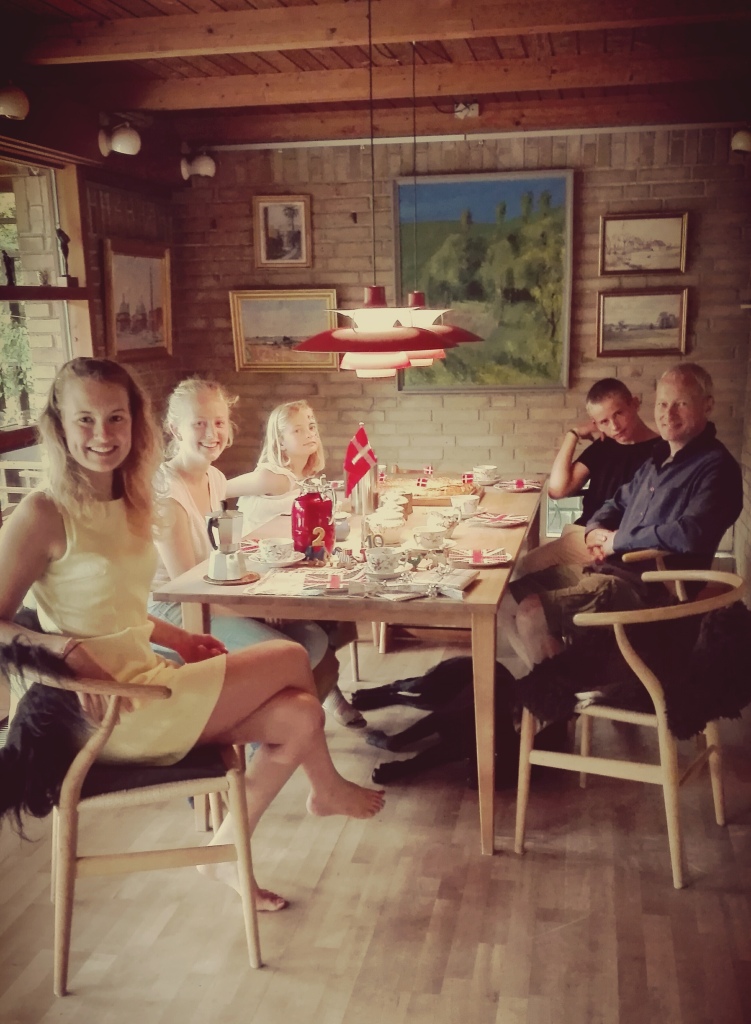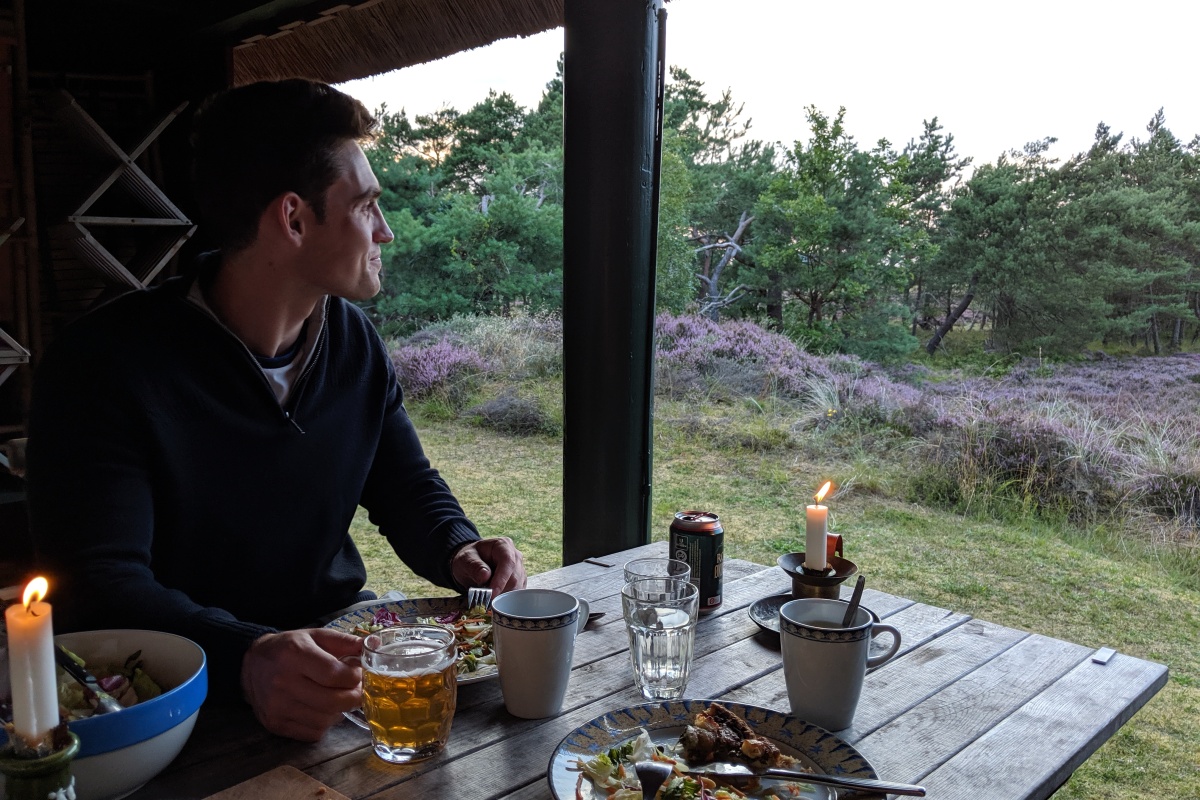Although I am (half) danish and have grown up with the danish life included in most aspects of my life, I have never hosted a danish lunch. So I could do some learning in the basics of how it is done.
Firstly, the charm is in its simplicity.
Us Danes like to focus on a few things and do them well. You will have noticed this in the Scandinavian interior design (I go into the table layout and decorations further down) that we are known for and the neutral coloured way Danes are stereotyped as showcasing. In food this translates to our staple Smørrebrød, danish’s finest cuisine and consists of a wonderful array of toppings on rye bread (rugbrød). But not just any rye bread, it must be a high quality, have a hearty flavour and be good enough to eat with salted butter. Even children are packed off with a lunch box composed of rye bread, sliced vegetables and a piece of fruit.

So naturally my first step was in deciding on the bread to use, which of course had to be rye bread. The difference for us was one of the family is Gluten Free, so finding a rye bread that would work is a little tricky. In the end I have decided to buy one of the standard rye breads from the shop, and then attempt to make this GF rye bread recipe. That way I have a back up and give a tasty loaf a good go too.
Next, I thought about my own preferences for Smørrebrød toppings and separated into a meat option, a vegetarian option and a fish (there must always be fish!)

A significant pointer about toppings is the mixtures of raw and picked vegetables scattered on top. If you get the finishing touches straight from the garden, then all the better for taste and presentation.

For the meat I went for ham slices curled across the buttered bread, a line of homemade remoulade and sprinkles of homemade crispy onions (the type traditionally found on danish hotdogs).
The fish dish was pickled herring with raw thinly sliced red onion, capers and dill leaves delicately placed on top.

The vegetarian dish had to therefore have eggs. Soft boiled eggs with the yolk still warm and gooey. Top this with translucent slices of radish, twisted rolls of cucumber and diced spring onion.

As tasty as Smørrebrød is, I understand it is not to everyone’s liking, and thus will also be cooking up some Danish gems of side dishes.
RØDKÅL, Coleslaw (although this is not a danish recipe, it is the best coleslaw!) and agurkesalat. With a cheeky side of potato salad the danish way; cold and creamy and ever so slightly sour.

Although it is not the tradition, I have been craving some danish sweet treats and so will also be baking some little desserts. The danish baking may also be a (not so subtle) attempt to convince my lunch guests that danish cuisine is not just picked, sour and nature centric.
First up is the desserts. For the summer inspired one we have Ablekage, layers of apple puree, whipped cream and crispy sweet biscuits (and with choc on top & GF). My boyfriend had a try in Denmark over the summer, and fell in love.
For the winter dessert I couldn’t not make Risalamande a dish usually kept for Christmas Eve, but one I would love for everyone to try. It’s rice pudding enveloped in thick whipped cream with flakes of almonds in and a hot cherry sauce drizzled on top. The game played in Denmark is of a singular whole nut being placed inside, and the recipient of the whole nut must keep it in their mouth until the meal is finished where they then win the prize. I recently learn that it is common amongst the adults at the table to keep putting the almond back until the children find it.

Next are the baked treats which consist of GF Hindbaersnitter and GF Drømmekage. Although I will be following the toppings of the below Hindbaersnitter as these are the ones I have grown up to love and adore (sprinkles are heavily encouraged to cover the entirety of the icing.)

Finally, no Danish celebration would be complete without a little bowl of liquorice (salted if possible), a jug of elderflower cordial and a pot of strong black coffee. Fun fact – Danes are the 4th biggest coffee consumers in the world. Or 9th depending on where you get your coffee facts…
This blog post by ‘Where two go to’ captures the coffee culture perfectly, and even feature my favourite Copenhagen cafe (Paludan Bogcafe).
Set-Up
Before even getting to the decorations of a danish eating experience, it starts with where in the house you position the meal.
Whenever you can, eat outdoors (and really… many Danes take this literally and only deem torrential downpour as a ‘can’t’).


The reason for the love of the outside extends further than the proximity to nature and fresh air, but also the fascination with light. We are known for our lampshades around the world, and this is because light is the centre of hour home decor, our architecture and our lives. Which of course brings us to candles.
Candles are used in the light as well as the dark. They are as much about the ambience as they are for practical vision use.

Cutlery, napkins (cloth is preferred) and set up is usually simple, but elegant. The Royal Copenhagen porcelain are our high end hand-painted dining sets and every dane usually has at least one piece of the collection. It has been a danish favourite since 1775 when Queen Juliane Marie launched the collected. The three waves seen underneath the crown on the logo stamped on every single piece, represent the three Danish waterways; the Oresund, the Great Belt and the Little Belt.
They are simply beautiful and danish in a wonderfully sophisticated nutshell.


Next, we have the flags (Dannebrog)!
Each county has a relationship with their national flag, and although it might come across egotistical and incredibly patriotic, the danish flag represents unity and celebration (to me). I see the flag and feel instantly warm and as though there is something to celebrate. It could be that the flag is brought out every celebration. For birthdays they appear on our cakes and around the table, at Christmas we stick them on-top of the meats and puddings and for national events they are tied to the buses and paraded around the city.
There is no such things as too many flags at a danish shindig.

Lastly, we are all about the people.
Those making up the bums on seats and adding to the feel of the meal. We aren’t doing multiple things at once, but are there to enjoy each others company and catch up.
There is laughter, stories being told and a total disregard for keeping time. Be that the weekend, week night or middle of a workday.
Food is important to us, and so are those we are sharing it with.
Alas, I did want to share a few danish facts with my lunch guests and so created a fun quiz to engage everyone. I have created a separate blog post for these (posting tomorrow), as to not lose everyone in a scrolling frenzy
Join in and send me pictures!
